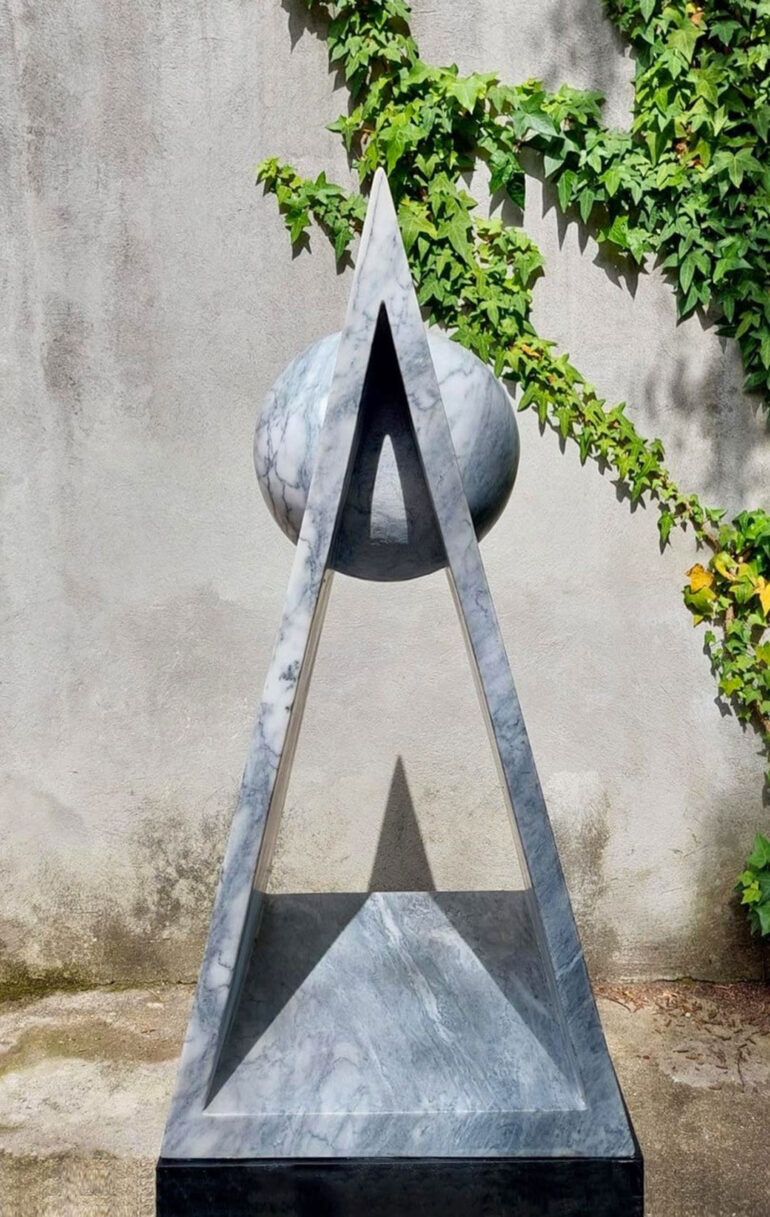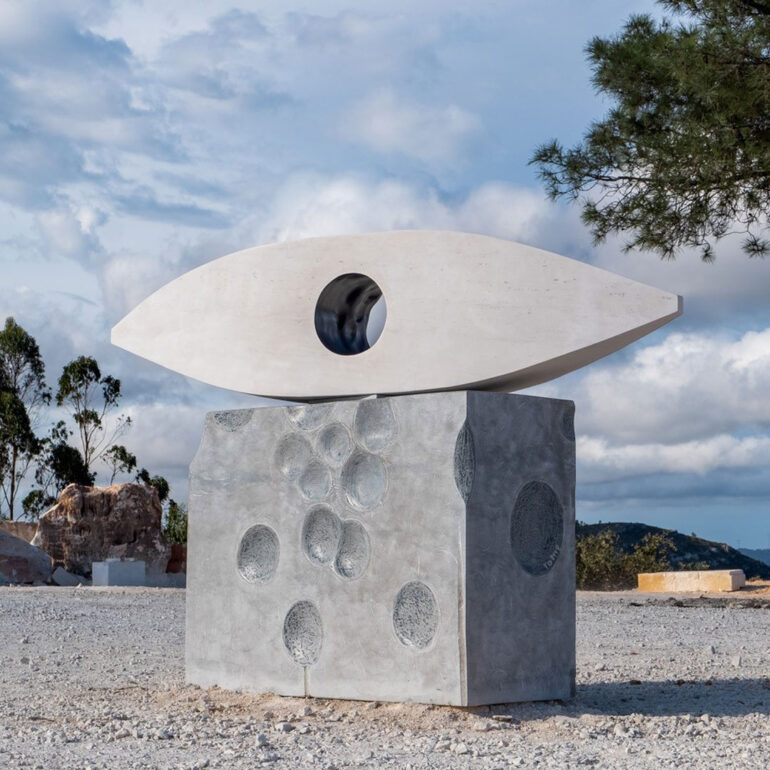www.rompstone.com
Words: Joana Jervell
Rita Pereira was born in Lagos in the Algarve region, and still lives there. The sculpting of stone — a robust and static material which she says can become extremely delicate — is where she finds her artistic language, creating pieces that evoke movement, subtlety and poetry.
She recognises that her art is an extension of the environment that surrounds her, of the tranquillity of the sea, of her proximity to nature and her constant contact with her roots.
We paid a visit to find out about the soul behind RoMP (the initials of “Rita os Meus Pés”).
Q: What else attracts you to sculpture?
A: I love the fact that thinking is linked to the act of creating with your hands. Machines are an extension of that thinking. I do some drawings before I start working with the stone. These help me to solve questions like form, balance and measurements, but it’s the three-dimensional nature of the stone that enables me to convey what I have pictured in my mind. My way of creating is through subtraction; it’s in the act of taking away that I find true satisfaction. And I’m fascinated by the colours and textures of marble and limestone. There’s something magical about working with a material that’s millions of years old.
Q: Where are the roots of your sculpture?
A: My sculptural roots come from my childhood. I had the privilege of growing up surrounded by sculptors who were friends of my family. I saw the works of Vera Faria Gonçalves and Raymond Dunas being created from an early age. But starting the sculpture course at the Faculty of Fine Arts in Lisbon was what gave me my first direct contact with the material. It marked the beginning of my learning and experimentation, something which remains with me today.
Q: What can you tell us about the themes you explore the most?
A: The central theme of my work is nature; and the sea is one of my greatest sources of inspiration. I have also explored personal development, which is intimately linked to my spiritual path. I see my artwork as a form of autobiographical expression, which reflects my inner journey and my relationship with the world around me.
Q: Who are the artists whose work particularly inspires you?
A: Barbara Hepworth will always be a great reference point for me — not only for the remarkable journey she made in sculpture, but also for the magnificent pieces she created. My inspiration comes from many artists. I particularly like to explore the contrast between ancient masters and contemporaries, both in the field of sculpture and in other artistic disciplines such as painting, architecture, dance and music. This vast universe of references enriches my creative process and feeds my constant search for new forms of expression.
Q: What sort of projects arrive at your studio?
A: I have several projects and orders coming up, which are always different from each other. It may be reproducing sculptures that clients have seen in my portfolio, designing a project from a theme or idea, or doing a sculpture based on a simple sketch from a customer. I really like these challenges, because I often end up creating something that I never imagined before, and I feel encouraged to find solutions to new problems.
Q: What do you find in your surroundings that is naturally reflected in your sculpture?
A: I grew up in Lagos, and this is where I live. When I finished my studies, I knew I wanted to come back and work in the place that I always called home. Living in such a beautiful place, close to the sea, family and friends, is a privilege that fulfils me. I can’t imagine my life in the city again; the tranquillity and pace of life that Lagos offers me are deeply reflected in my work.
Q: If you could pick out one project that has been especially memorable for you, what would it be?
A: I would choose the ‘Melting Collection’ project for the MANTA brand, which was developed in collaboration with designer André Teoman, and done for the ‘Gothic Gargoyle’. This is a cutlery company located in Batalha, where I had the opportunity to gain valuable expertise. Whenever I have doubts about something, I go back to them. They are an important landmark in my journey.
Q: For people who don’t know your work yet, where can they see it?
A: You can find it online through my website rompstone.com and on social networks Instagram/Facebook, via @rompstone. You can see my work in person by visiting my shop ‘TEIAS ARTÍSTICAS’ or my workshop at LAC in Lagos. At the moment I have some pieces on display at the Hospital and Spa Museum in Caldas da Rainha, at ADÃO in Barreiro, at Estúdio Onze in Faro, at Poeta & Sereno in Albufeira and at the Lady In Red Gallery in Portimão.
Q: What sculpture haven’t you made yet and would like to make one day?
A: As a creative person, I have more ideas than time, but I suppose I would like to work more with monumental sculpture. Creating large pieces awakens the child in me, and I feel like I’m back in the playground, shaping my imagination with a freedom that is all my own.
Q: When you are not busy sculpting and covered in dust, where can we find you?
A: It all depends on the weather, but you can often find me on the beach: reading, swimming, surfing or simply sleeping in the sun. Near the beach, hiking or cycling. And when I move away from the sea, it’s to go to concerts, to dance or to go on quiet retreats. This is all reflected in my travels, when I find great inspiration for my projects. It’s when I’m busy ‘doing nothing’, when my mind is let loose and time seems to stop that the best ideas arise. It’s as if silence itself is a fertile ground for creativity.
Q: Things that make you happy?
A: Increasingly, it’s the small day-to-day things that fill me with happiness — a smile, a tight hug, the warmth of the sun on my skin, a song, tasty food… I could spend the whole day listing what makes me happy. In the end, I suppose being alive and healthy is both a choice and a privilege, and I try to live that privilege to the fullest.




